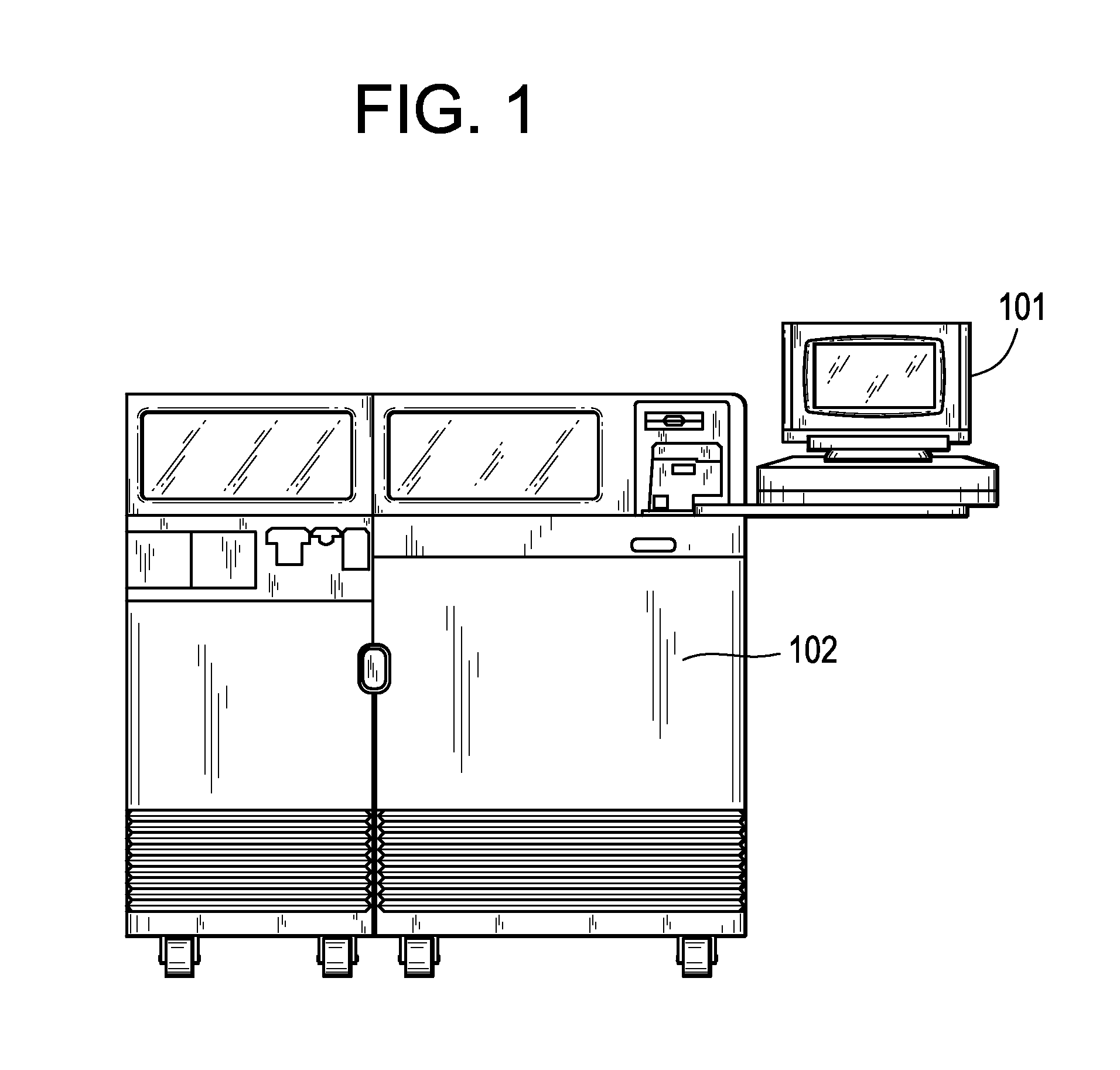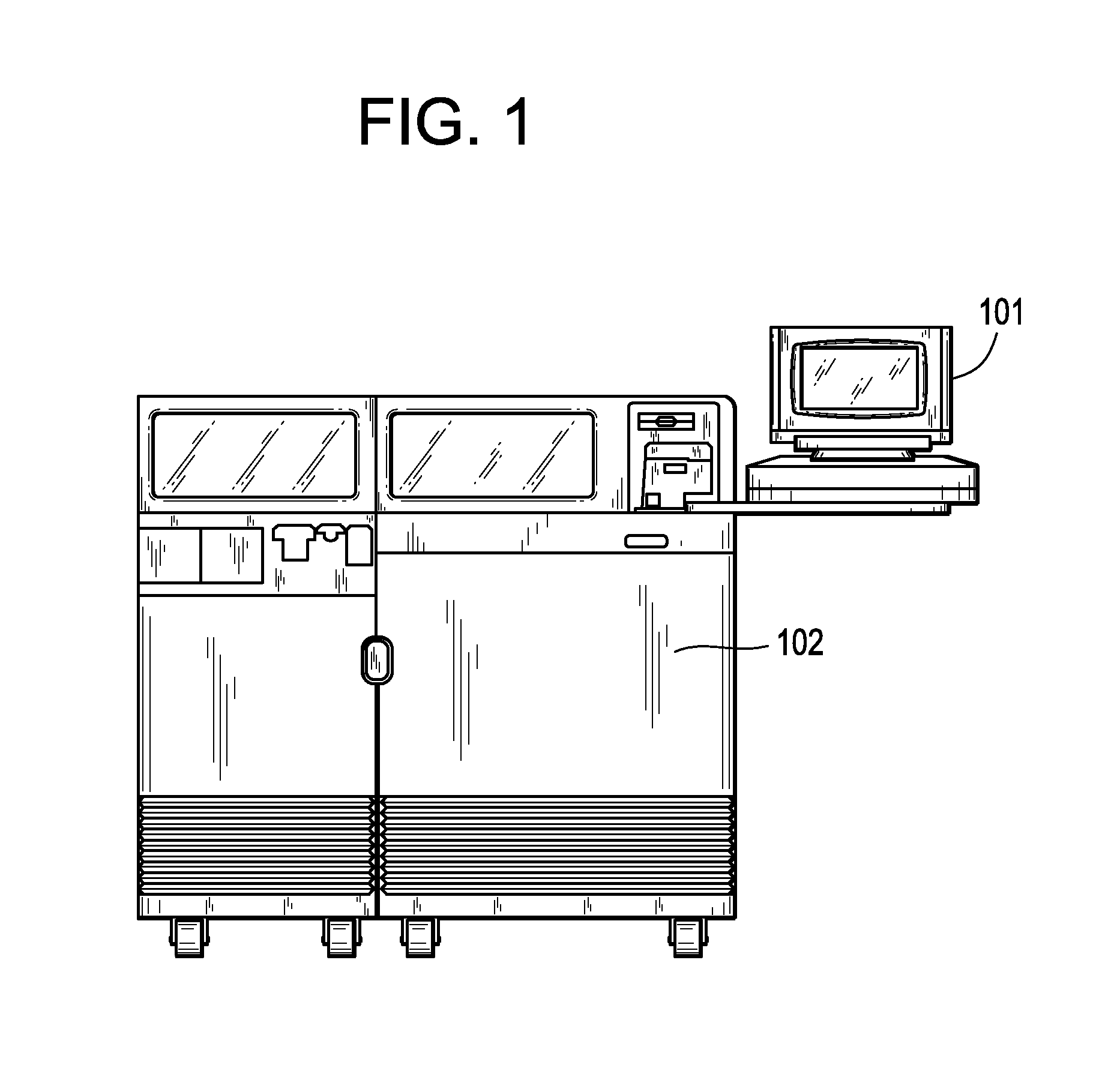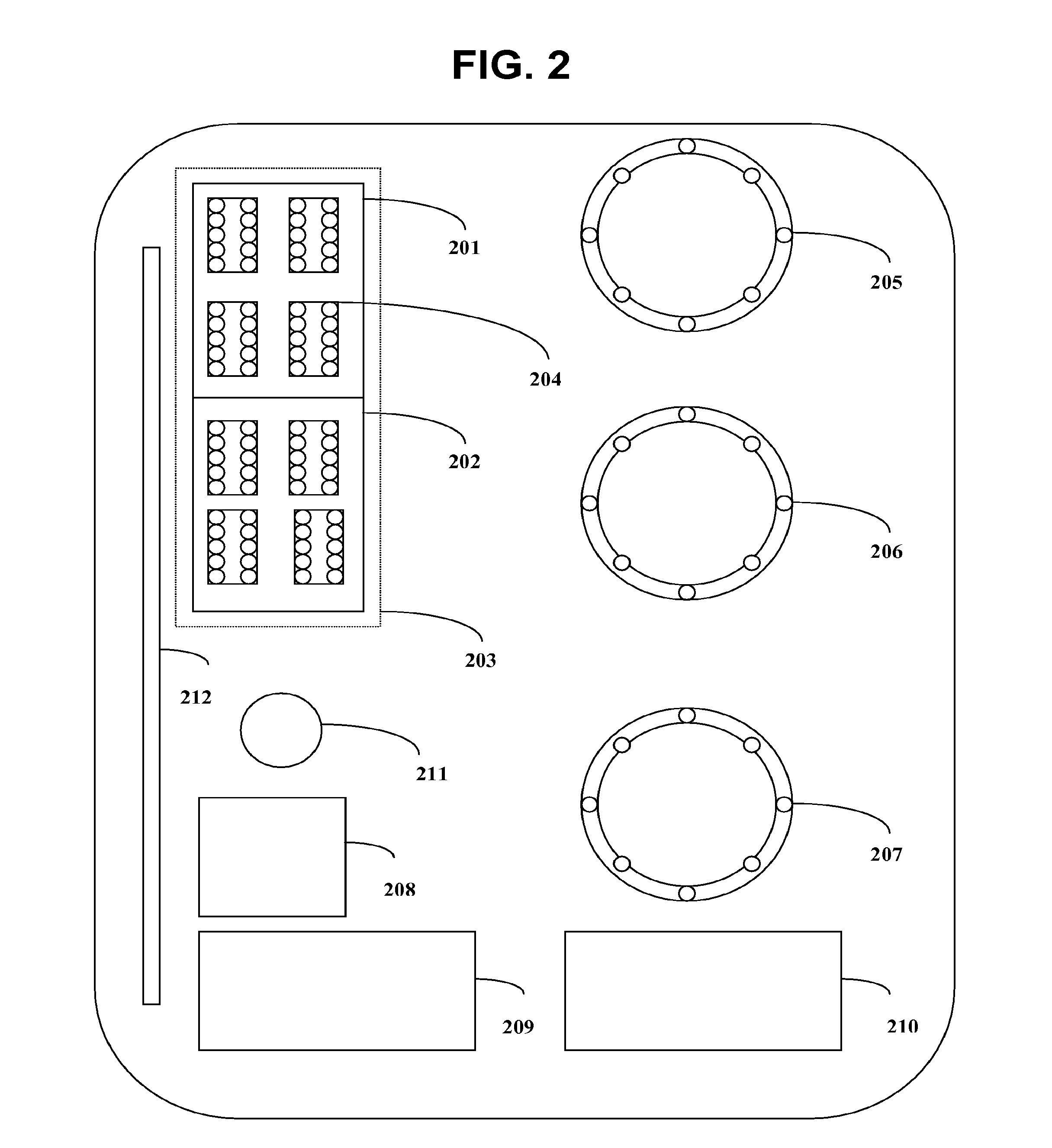Method for scheduling samples in a combinational clinical analyzer
a clinical analyzer and sample scheduling technology, applied in the field of combinational clinical analyzer sample scheduling, can solve the problems of inability to produce these assays quickly, reduced volume throughput of the analyzer, and inability to meet the needs of rapid production, so as to achieve the effect of minimal turnaround time and optimally selectable objective function of operational performan
- Summary
- Abstract
- Description
- Claims
- Application Information
AI Technical Summary
Benefits of technology
Problems solved by technology
Method used
Image
Examples
Embodiment Construction
[0050]The present invention enables the operator of a combinational clinical analyzer to input samples in any order, without regard to the type or quantity of tests (i.e., assays) required of the samples, and not affect the operational performance of the device, i.e., the clinical analyzer will be able to process tests at its fully rated sample or volume throughput capacity without impacting the time to first result or the turnaround time associated with individual samples. For example, the present invention would allow an operator to input a set of patient samples, such as plasma, serum, whole blood, etc., that requires a very long time to complete for certain specific tests and then afterwards submit a series of samples requiring significantly less time to complete using other resources. The analyzer would evaluate the test requirements of the two sets as a whole and determine the schedule that minimizes the elapsed time to complete all analysis on all samples, generally referred ...
PUM
| Property | Measurement | Unit |
|---|---|---|
| time | aaaaa | aaaaa |
| time | aaaaa | aaaaa |
| time | aaaaa | aaaaa |
Abstract
Description
Claims
Application Information
 Login to View More
Login to View More - R&D
- Intellectual Property
- Life Sciences
- Materials
- Tech Scout
- Unparalleled Data Quality
- Higher Quality Content
- 60% Fewer Hallucinations
Browse by: Latest US Patents, China's latest patents, Technical Efficacy Thesaurus, Application Domain, Technology Topic, Popular Technical Reports.
© 2025 PatSnap. All rights reserved.Legal|Privacy policy|Modern Slavery Act Transparency Statement|Sitemap|About US| Contact US: help@patsnap.com



